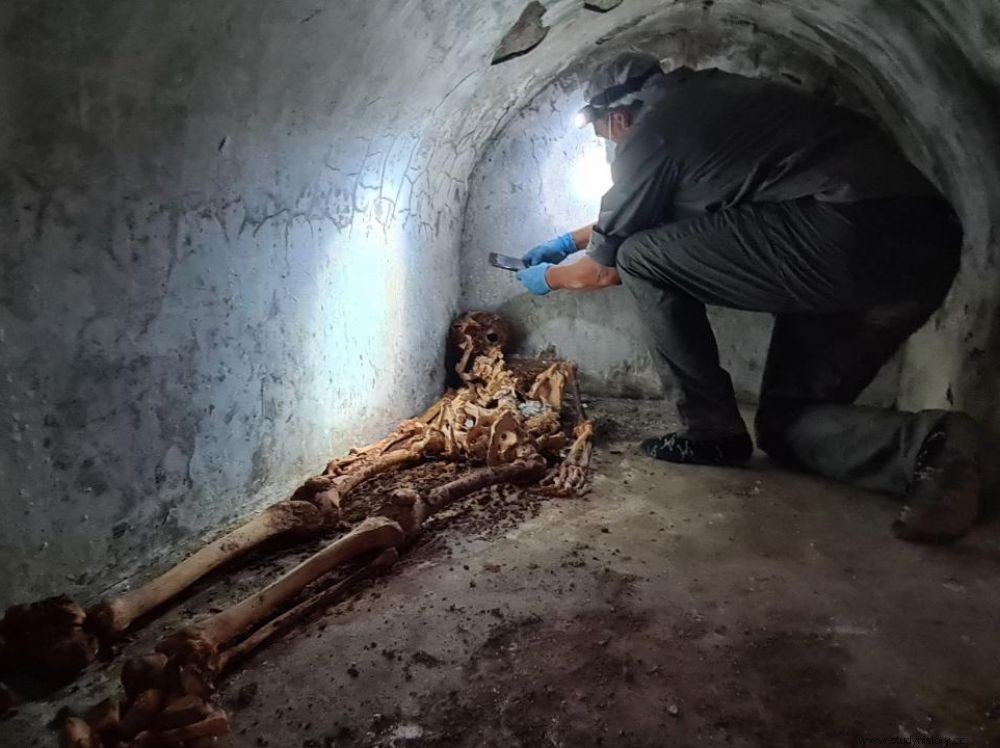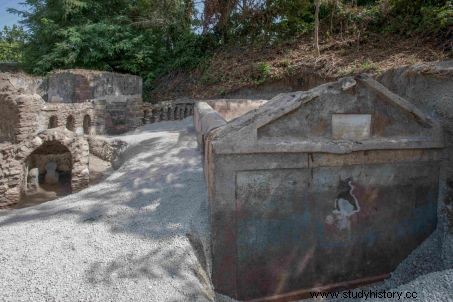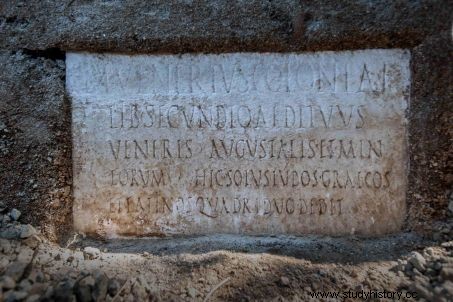A mummy was found in the necropolis of Porta Sarno, east of the ancient ancient city of Pompeii, under a marble slab. The inscriptions on the tomb testify to the use of Greek in the city, of which there was no proof so far.

The body of Marcus Venerius Secundio, found in Pompeii, has been the subject of archaeological analysis.
The excavations carried out in the necropolis of Porta Sano, initiated by the Archaeological Park of Pompeii and the European University of Valencia, have revealed a tomb structure dating from the last decades before the volcanic eruption that buried Pompeii in 79. The tomb would once have been blue in color, adorned with green paintings of leaves.

A former slave turned wealthy
The archaeologists encountered a particularly well-preserved skeleton when exploring the funerary structure. The man, who was believed to be over 60 according to his bone analysis, had retained some hair and even a piece of an ear. Around him, objects were found, including vials and pieces of fabric. "We have yet to determine whether the partial mummification of the deceased is intentional or not" , explains Llorenç Alapont, archaeo-anthropologist at the University of Valencia, in a press release from the Archaeological Park of Pompeii. "From sources, we know that certain textiles, such as asbestos, were used for embalming" he adds.
The body was quickly identified, thanks to the epitaph engraved on the tomb. This is a man named Marcus Venerius Secundio, a former public slave from the city of Pompeii. Slavery in ancient Rome covered very diverse situations. While rural slaves were responsible for field work, urban slaves could be assigned accounting or household duties. Public slaves, on the other hand, are employed by Rome or by a city, and work for the general interest and the common good. Marcus Venerius Secundio, according to the epitaph, was the guardian of the Temple of Venus in Pompeii, who, after being freed, joined the college of the Augustales, gathering the priests in charge of the celebration of the imperial cult.

Details on cultural life in Pompeii
But this discovery is not only surprising because of the impressive preservation of the body of the freed slave, but also because it allows us to learn more about Pompeian culture, whereas since the first excavations of the city at the end of the 18th century, the enthusiasm aroused by the site never waned. The discovery of the body of Marcus Venerius Secundio was all the more surprising since the bodies of deceased adults were usually not buried but cremated. It remains to be determined why the priest was an exception.
The study of the funerary monument also provides information on life in Pompeii, before the eruption of Vesuvius which led to its burial in 79 AD. Thanks to the epitaph engraved on its tomb , we learn that Marcus Venerius Secundio funded four days of ludi - "games" - Greek and Latin in Pompeii. This means that shows were performed in the Greek language. If this is not surprising, since Greek culture persists in southern Italy, populated by Greek colonies from the 8th century BC, for Gabriel Zuchtriegel, director of the Archaeological Park of Pompeii, "l e the fact that performances were given in the Greek language proves the lively and open atmosphere that reigned in Pompeii" .
